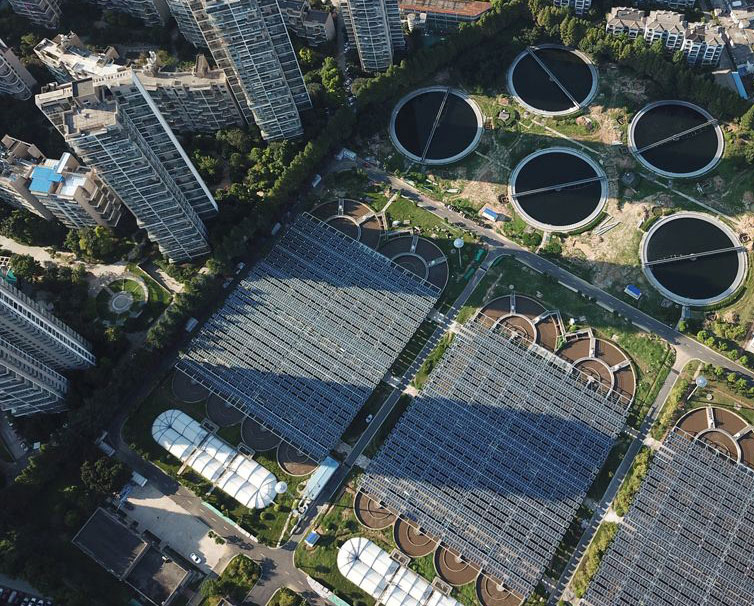-
You have no items in your shopping cart.
- Register
- Log in
- Wishlist
- Shopping cart
solar inverter
As one of the multiple development and utilization approaches of solar energy, solar photovoltaic power generation has the characteristics of pollution-free, renewable, flexible and storable and so on. The photovoltaic power generation system has been put into practical use in the fields of road lighting and residential construction. The water treatment industry is also suitable for the application of the photovoltaic power generation system because of its unique industry characteristics. The solar photovoltaic system is composed of a solar battery pack, a solar charge controller, and a battery.
The application of the photovoltaic power generation system has the following advantages in the wastewater treatment industry:
No sheltering of tall buildings around
Most of the water treatment plants are located in areas with relatively concentrated industrial enterprises and remote positions. The surrounding buildings are mostly low-rise buildings such as industrial plants, and there is less shielding for the photovoltaic power generation system in water treatment plants. At the same time, since the construction condition of the water treatment plant itself, the structure and the building unit itself are low in height and sparse in layout, and are not easy to cause occlusion, thus having better illumination conditions.
Rather big installable roof area
Due to the need of the technological procedure, most water treatment plants have rather big architectures, such as biological reaction tanks, secondary sedimentation tanks, blower rooms and so on, which usually have large installation spaces for photovoltaic systems above. In addition, the photovoltaic power generation system of the water treatment plant mostly belongs to the roof-type distributed photovoltaic system, thus involving no newly increased land, changing no land application, affecting no cultural relic protection requirement, increasing no building area and changing no building structure.

Improve the technological treatment effect
The reasonable layout and design of the photovoltaic power generation system of the water treatment plant can reduce the evaporation amount of the pool water, increase the water treatment capacity, reduce the impact of sewage evaporation on the environment. At the same time, it can still reduce the wind speed above the pool, improve the local small environment, increase the temperature of the pool water, enhance the growth activity of the microorganisms, improve the sewage treatment effect, and finally achieve the purpose of improving the water treatment capacity and the comprehensive economic benefits of the project.
High and stable power generation of the water treatment plant
The loads of water treatment plant include high-power loads such as blowers and submersible pumps, as well as low-power loads such as gates, grilles, and submersible flowers, which usually have higher computational powers. Moreover, due to the relatively balanced water volume, the operation of each technological equipment is relatively stable, and the load characteristics are stable, thus being convenient for the design of the solar photovoltaic power generation system.
Since the water treatment plant has great power consumption and small changes, the reasonable design of the photovoltaic system can fully utilize the photovoltaic power, avoid power waste of the solar inverter, and reduce the light rejection rate.
Good financing conditions
Water treatment plants usually have long operating cycles, guaranteed operations, stable benefits, high self-sufficiency ratio, and high return on investment, thus avoiding the problem of financing difficulties.
Low maintenance cost
After the establishment of the solar photovoltaic system, its operating costs, in addition to equipment damage caused by force majeure, are mainly the cleaning water expense and other maintenance costs. The cleanliness of the effluent or recycled water of the sewage treatment plant can meet the cleaning needs of the PV modules. At the same time, the water source after cleaning can be directly collected into the sewage treatment process, thus saving water and reducing maintenance costs.
